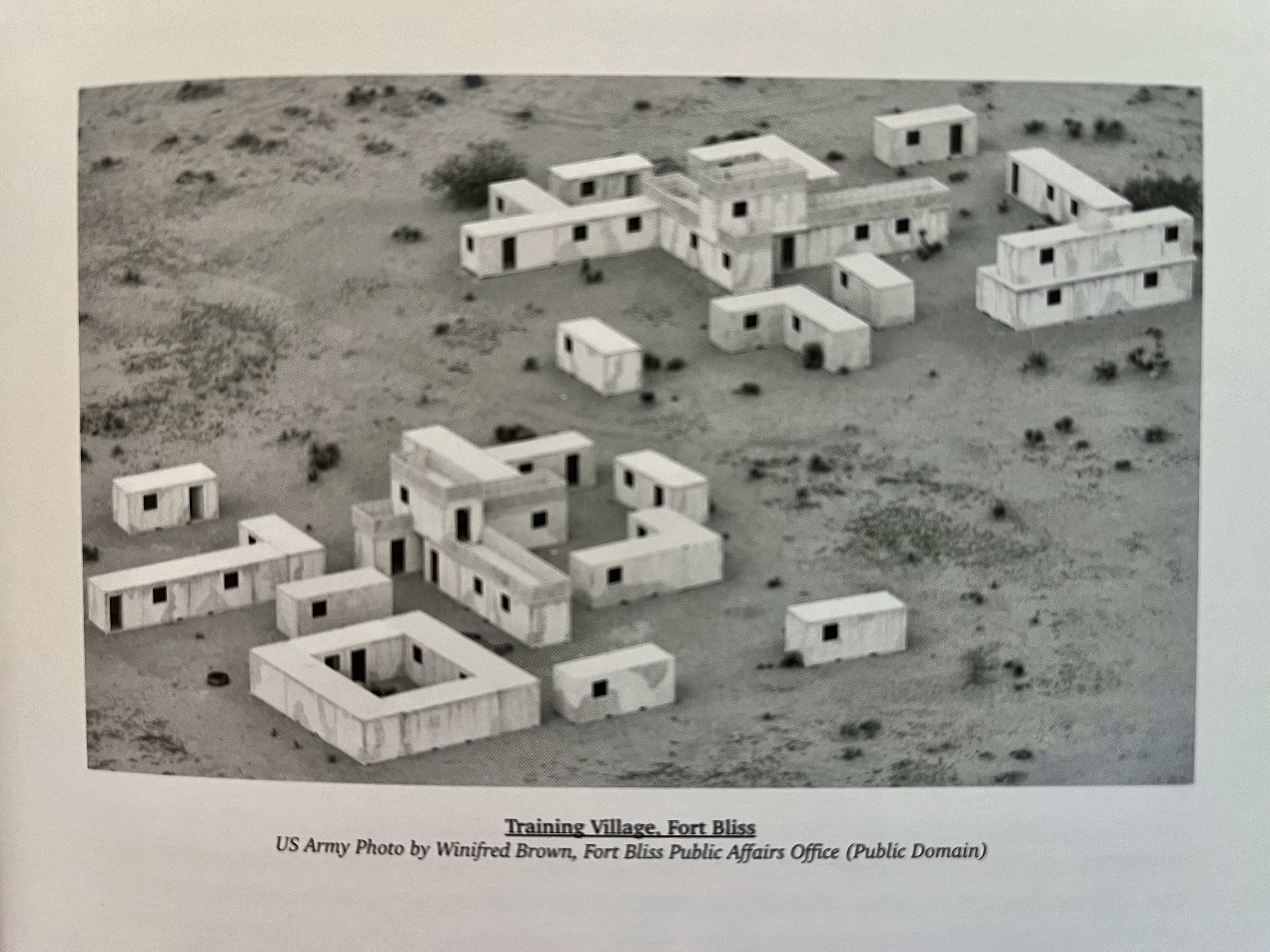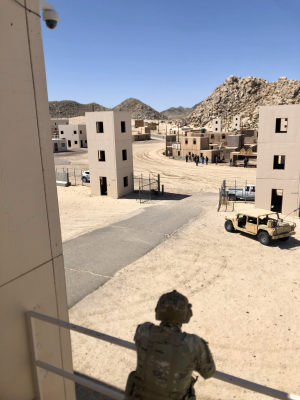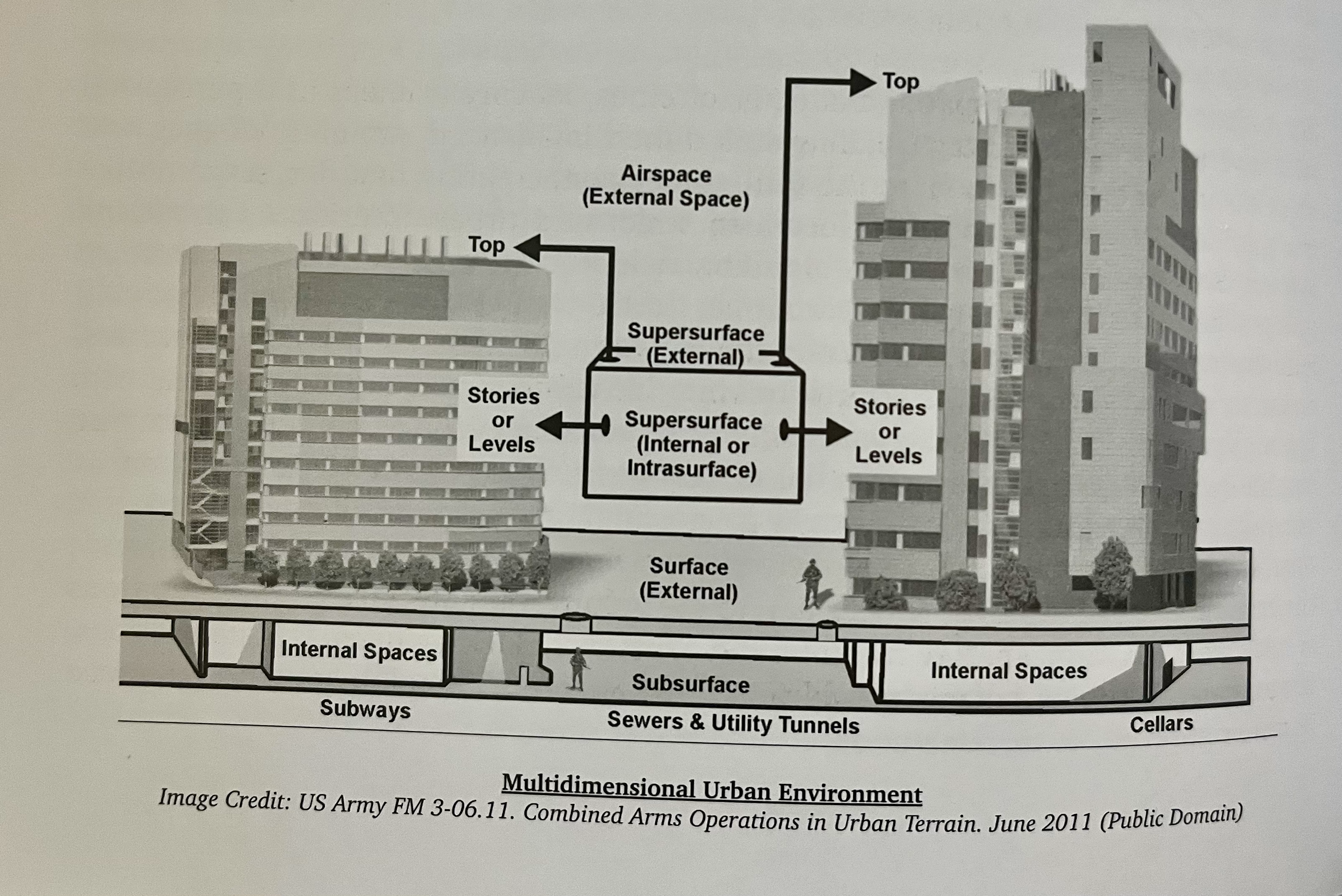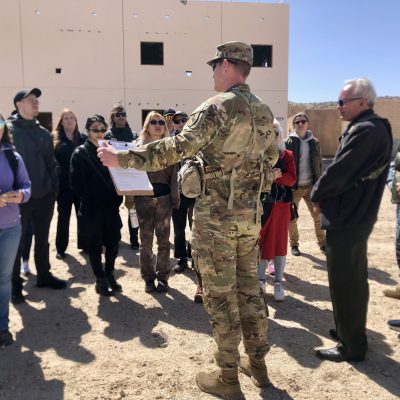29 Palms, California, is home to the world’s largest Marine Corps Training Base. It’s an elaborately built facility with lego-like buildings, a bazaar, a mosque,
and people role-playing as civilians, spies, or enemies, complete with costumes and props. It’s all part of an effort coordinated and constructed by the U.S. military to prepare soldiers for war. Fake villages designed for training purposes dot the entire United States, not to mention other countries. Researchers have identified over 400 of them around the world.

But these training simulations have a much longer history. And now — more than two years after U.S. troops pulled out of Afghanistan and nearly 21 years since the invasion of Iraq — they’re being revamped yet again for another era of warfare.

In theory, these training sites are meant to prepare soldiers and protect against the loss of life. But for the role players who staff them – often from the countries being simulated – the sites can start to blur truth and fiction in ways that can be uncanny, and raise questions about the changing nature of the battlefield, and the business of war.

For much of the long history of warfare, these types of urban simulations were unnecessary. Mostly because for much of history, warfare wasn’t “urban” at all – it happened on a battlefield. Around World War One, simple military simulations began to emerge.

Infantry would often dig trenches and practice drills in them to prepare for the trench warfare on the front lines. But it wasn’t until World War Two that the military fully realized the importance of urban simulations in preparing soldiers for war, largely in response to the 1942 Battle of Stalingrad, a dense urban environment with lots of structures.
The military went to great lengths to create authentic replicas of each new theater of war. Like replicating the moisture content of the wood used in enemy buildings, so they could understand how a foreign environment would respond to fire and explosions. They hired architects to design fake German apartment blocks and mock Japanese dwellings. They paid attention to minutiae on the exterior and interior of these homes to ensure they were realistic. Over the decades they also built roads and sewer systems to mimic the ones in Korea, and eventually phony Vietnamese villages in the swamps of Louisiana. But the “people” piece of battle became increasingly complex.
It wasn’t just the environment the U.S. military wasn’t prepared for — they didn’t know how to predict the people in the city, whether they were local sympathizers of the so-called enemy, or civilians caught in the crossfire. As conflicts arose in Somalia, Afghanistan and Iraq, enormous amounts of funding flowed into the military to update its training. The army wanted their soldiers better prepared to fight in cities crowded with both enemies and civilians. And so they hired role players to act out the parts, including complex roles, like a civilian police officer who is also secretly working on behalf of the enemy. For many participants, this meant play-acting in a place that looked eerily like home, and taking on roles they never would in real life.
The U.S. military is always looking to the future, preparing for the next conflict they see on the horizon. It’s a testament to how these simulations don’t go away, but are instead evolving to meet the military’s latest needs. But war is not just experienced by the military. And these simulations also provide a kind of archive of all the conflicts of the past, and the difficult legacy of U.S. militarism, in so many places around the world. But while they train personnel to fight in foreign lands, failed occupations and decades of fallout from global conflicts suggest they don’t do much to prepare the military for the aftermath.







Leave a Comment
Share